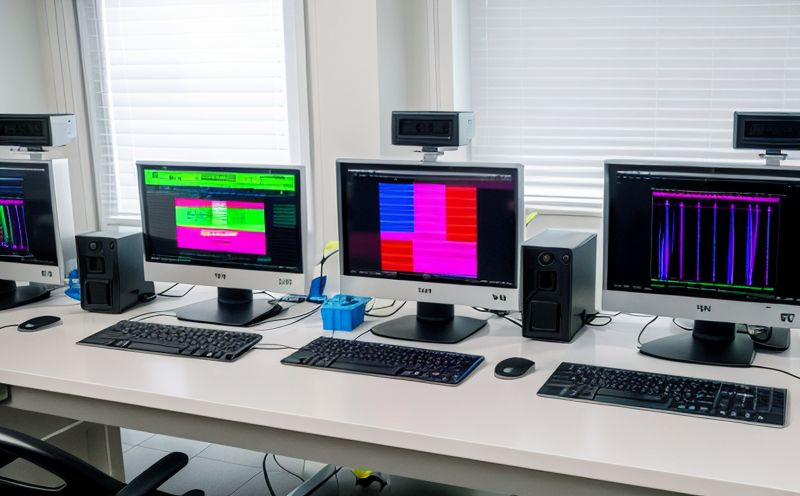ASTM E2720 Viral Biofilm Detection in Surfaces
The ASTM E2720 standard provides a robust framework for detecting viral biofilms on surfaces, which is critical for ensuring the safety of environments where pathogens could pose risks. This service addresses the need to quantify and assess the presence of viruses in biofilm formations that may compromise surface integrity.
The significance of this test lies in its ability to identify potential vectors for pathogen transmission. Viral biofilms can form on various surfaces, including medical equipment, food packaging, and public spaces. By quantifying these biofilms, facilities and organizations can take proactive measures to mitigate the risk of infection. This service is particularly relevant for healthcare settings, food processing plants, and any environment where surface hygiene is a priority.
The ASTM E2720 test protocol involves several stages that ensure accurate detection and quantification. Specimen collection must be meticulous; surfaces are swabbed to collect biofilm samples. The samples are then subjected to specific enrichment steps designed to enhance viral recovery. Once the biofilms are isolated, they undergo quantitative PCR (qPCR) analysis to determine the number of viable viruses present.
Understanding the implications of viral biofilm formation is crucial for industries where surface contamination could lead to significant health risks. The ASTM E2720 method not only helps in identifying the presence of viruses but also aids in evaluating the effectiveness of cleaning and disinfection protocols. By ensuring that surfaces are free from harmful biofilms, this service supports the broader goal of maintaining hygienic standards.
For facilities that handle critical equipment or sensitive materials, the ASTM E2720 test provides a reliable means to verify surface integrity. This is especially important in healthcare settings where patient safety is paramount. By adhering to this standard, organizations can demonstrate compliance with regulatory requirements and enhance their reputation for maintaining high standards of hygiene.
The ASTM E2720 method is designed to be versatile and applicable across various industries. Its applicability extends beyond medical facilities to include food processing plants, where the risk of cross-contamination could lead to product recalls or health scares. In public spaces like airports and train stations, ensuring that surfaces are free from viral biofilms can significantly reduce the spread of infectious diseases.
Given its broad applicability, ASTM E2720 is a cornerstone in the field of surface hygiene testing. It provides a standardized approach to detecting and quantifying viral biofilms, which is essential for maintaining safe environments. By leveraging this service, organizations can gain insights into potential risks and implement targeted interventions to prevent contamination.
Applied Standards
| Standard | Description |
|---|---|
| ASTM E2720 | Method for Quantifying Viable Viruses in Biofilms on Surfaces |
| ISO 18184-1 | Determination of Bacterial Virulence Factors - Part 1: General Principles and Definitions |
| EN ISO 22516-1 | Microbiology of the Built Environment - Sampling, Collection and Preservation of Microorganisms from Indoor Surfaces and Air |
Scope and Methodology
The ASTM E2720 method is designed to quantify viable viruses in biofilms that have formed on various surfaces. The scope includes the following key components:
- Sample Collection: Swabbing of surfaces to collect biofilm samples.
- Enrichment Steps: Techniques to enhance viral recovery from the collected samples.
- Viral Detection: Quantitative PCR (qPCR) analysis to determine the number of viable viruses present in the biofilm.
The ASTM E2720 method is particularly useful for identifying viral contamination on surfaces that are difficult to clean or where biofilms are likely to form. By following this standardized protocol, organizations can ensure consistent and accurate results across different environments.
Sample preparation plays a critical role in the success of the ASTM E2720 test. Swabs must be collected meticulously to avoid contamination from external sources. The swabbed samples are then processed according to specific protocols that include preservation steps to maintain viral integrity until analysis.
The use of qPCR is essential for detecting viable viruses within biofilms. This method allows for the precise quantification of virus particles, providing a clear indication of the level of contamination present on the surface. The results from this test are crucial for evaluating the effectiveness of cleaning and disinfection protocols in preventing viral transmission.
The ASTM E2720 method is not limited to any specific type of surface or environment. It can be applied to various surfaces, including metals, plastics, and textiles, making it versatile across different industries. The standard also provides guidance on how to interpret the results, ensuring that organizations can make informed decisions based on the data obtained.
Quality and Reliability Assurance
- Consistent Sampling: Ensuring that samples are collected under controlled conditions to minimize variability.
- Calibration of Instruments: Regular calibration of qPCR machines and other laboratory equipment to maintain accuracy.
- Duplicate Testing: Performing the test on duplicate samples to verify consistency in results.
- Training of Personnel: Ensuring that all personnel involved in the testing are properly trained and certified.
The ASTM E2720 method places a strong emphasis on quality control measures to ensure reliable and consistent results. By following these protocols, organizations can have confidence in the accuracy of their test results and make informed decisions based on this data.
Consistent sampling is critical for obtaining accurate results. Samples must be collected from representative areas of the surface being tested. This ensures that the sample reflects the overall condition of the surface rather than being influenced by localized factors. Regular calibration of instruments, such as qPCR machines, ensures that they are operating within specified tolerances, further enhancing the reliability of the test.
Duplicate testing provides an additional layer of assurance by verifying that results are consistent across multiple samples. This helps to identify any anomalies or errors in the testing process. Proper training of personnel involved in the testing is also essential for ensuring accurate and reliable results. By providing ongoing education and certification programs, organizations can ensure that their staff have the necessary skills and knowledge to perform the test correctly.





